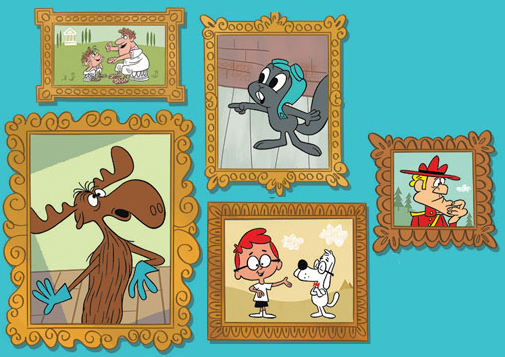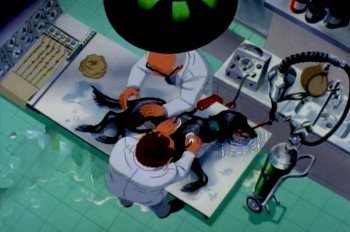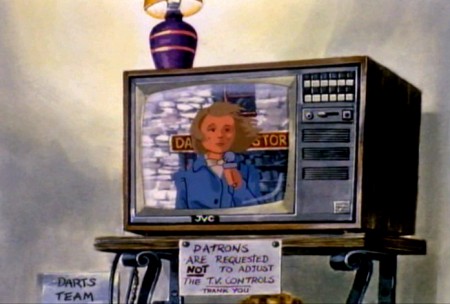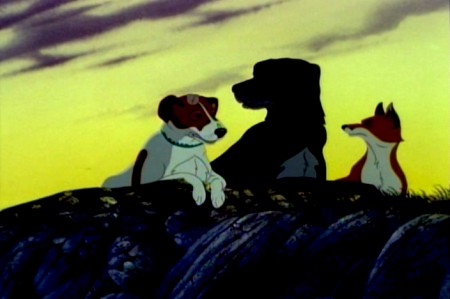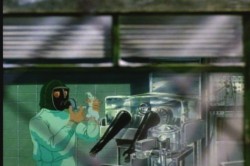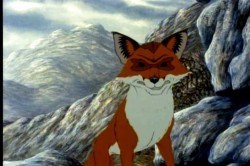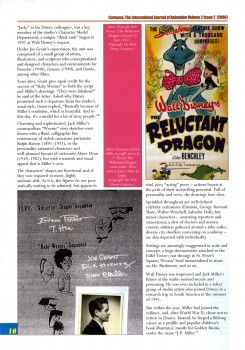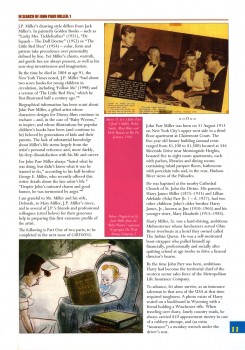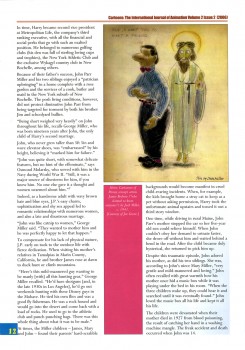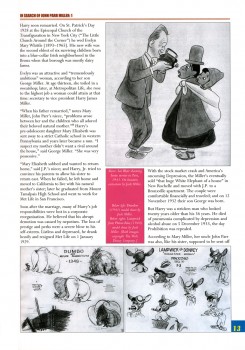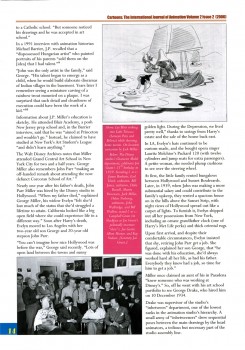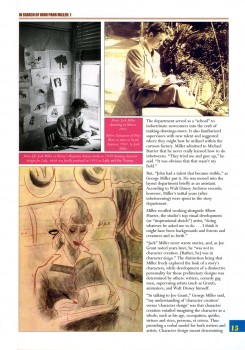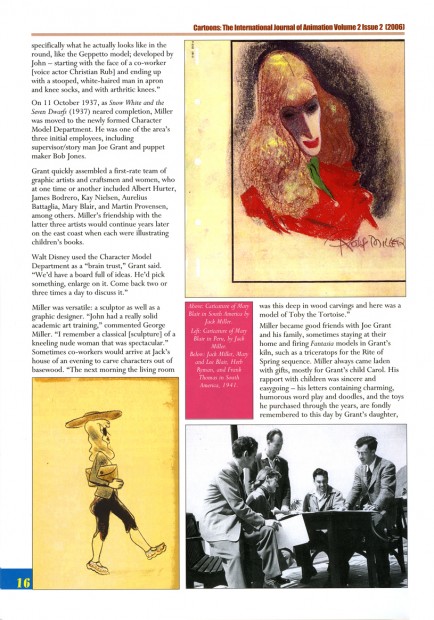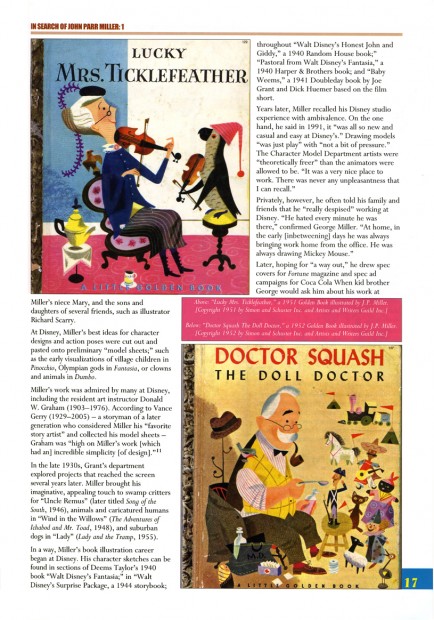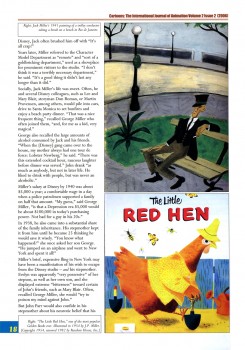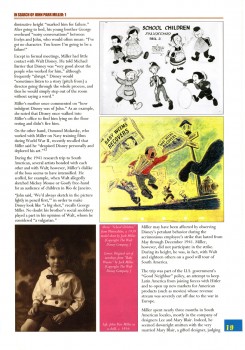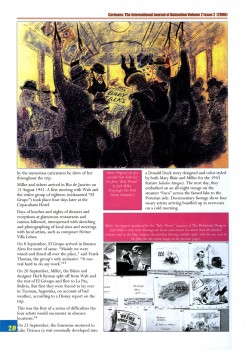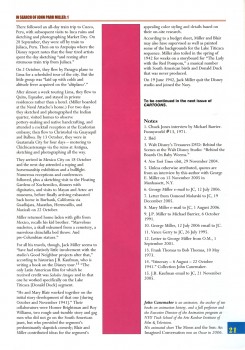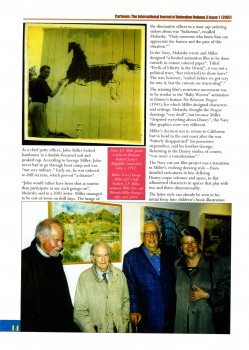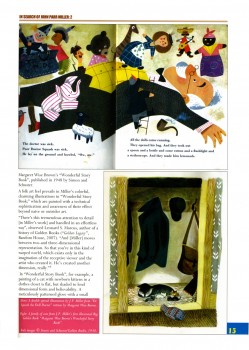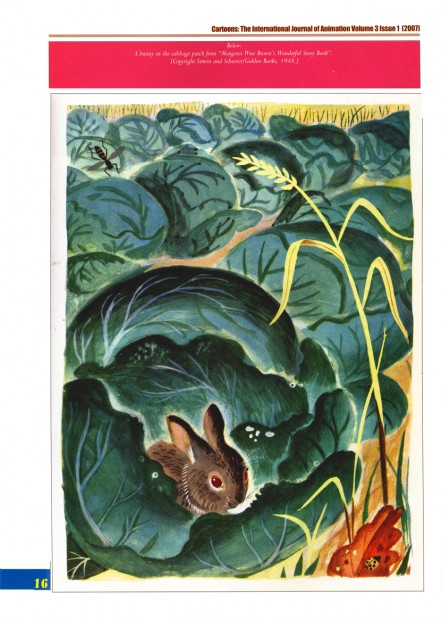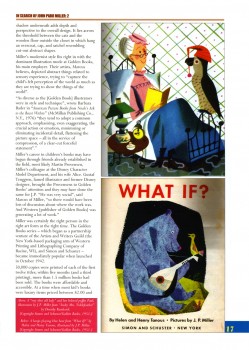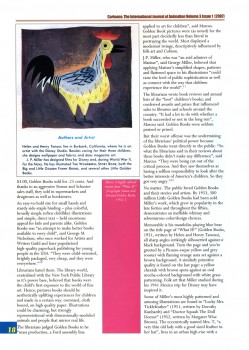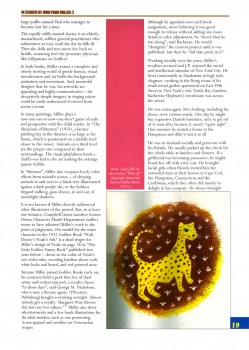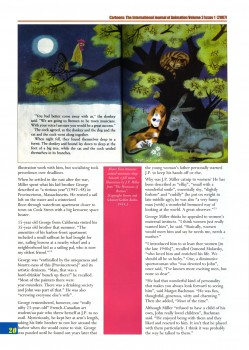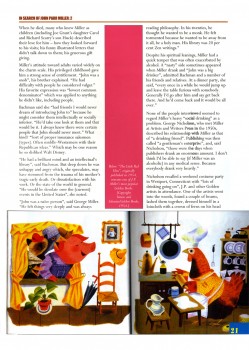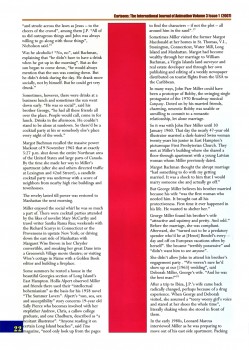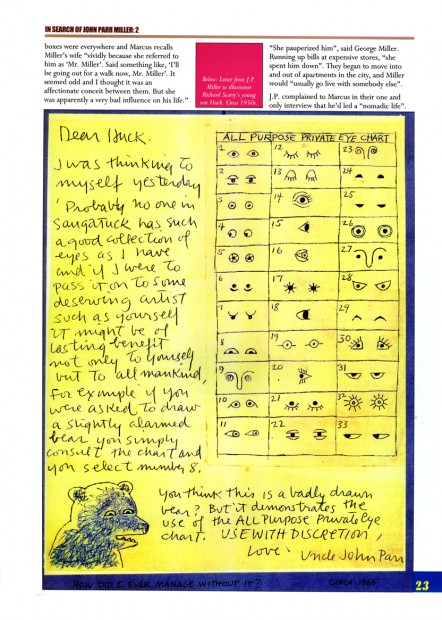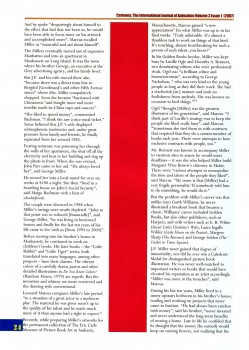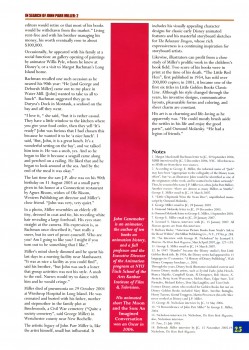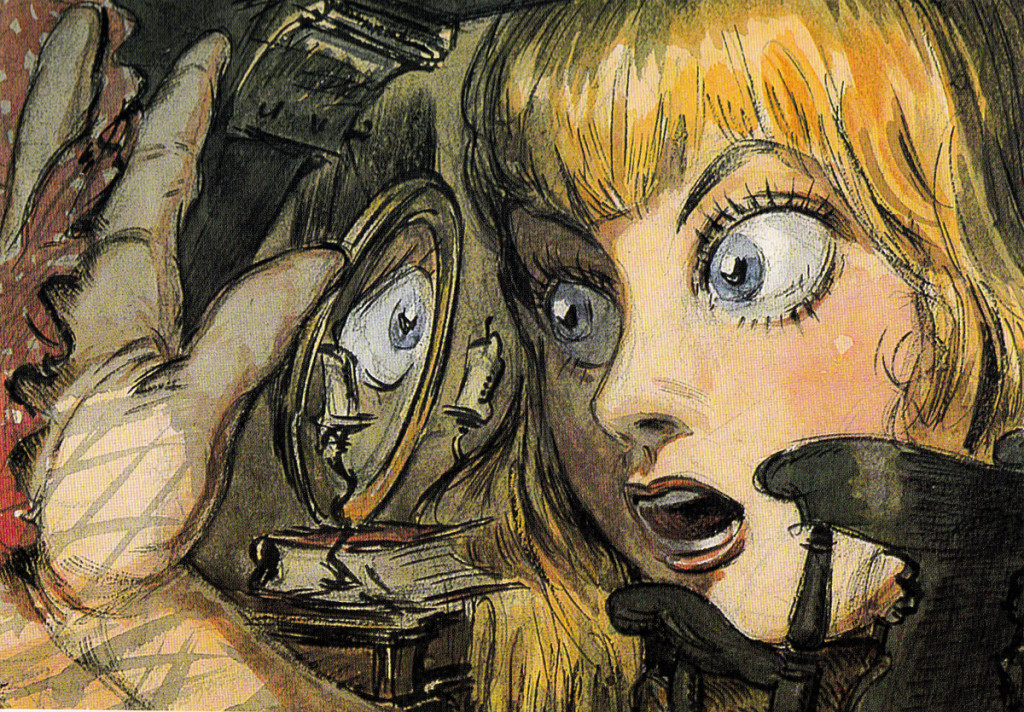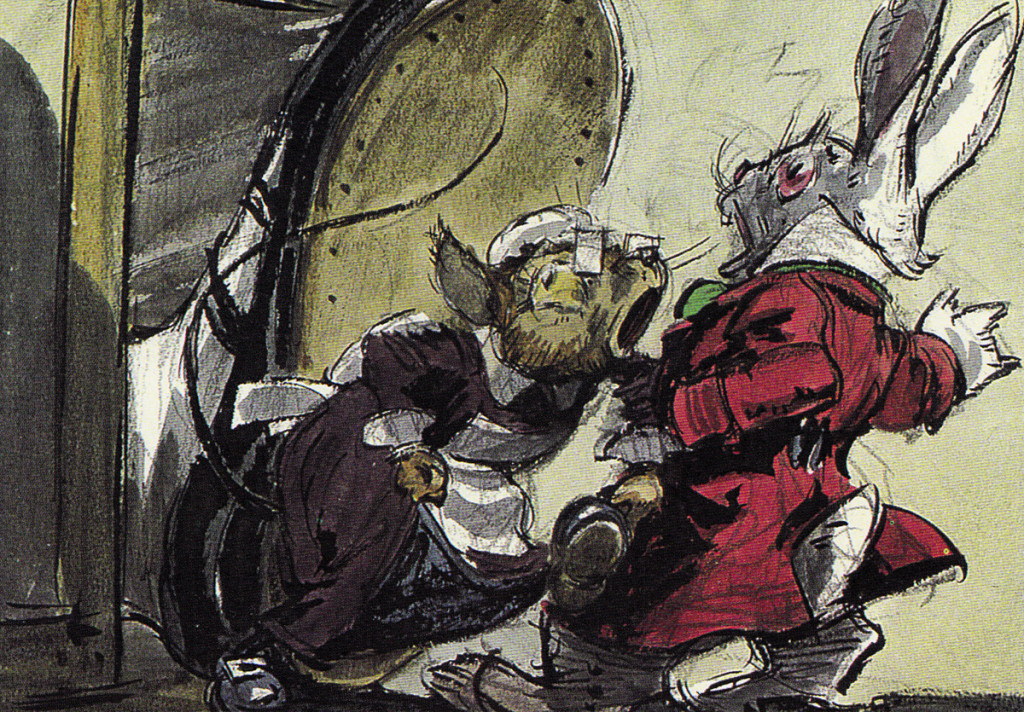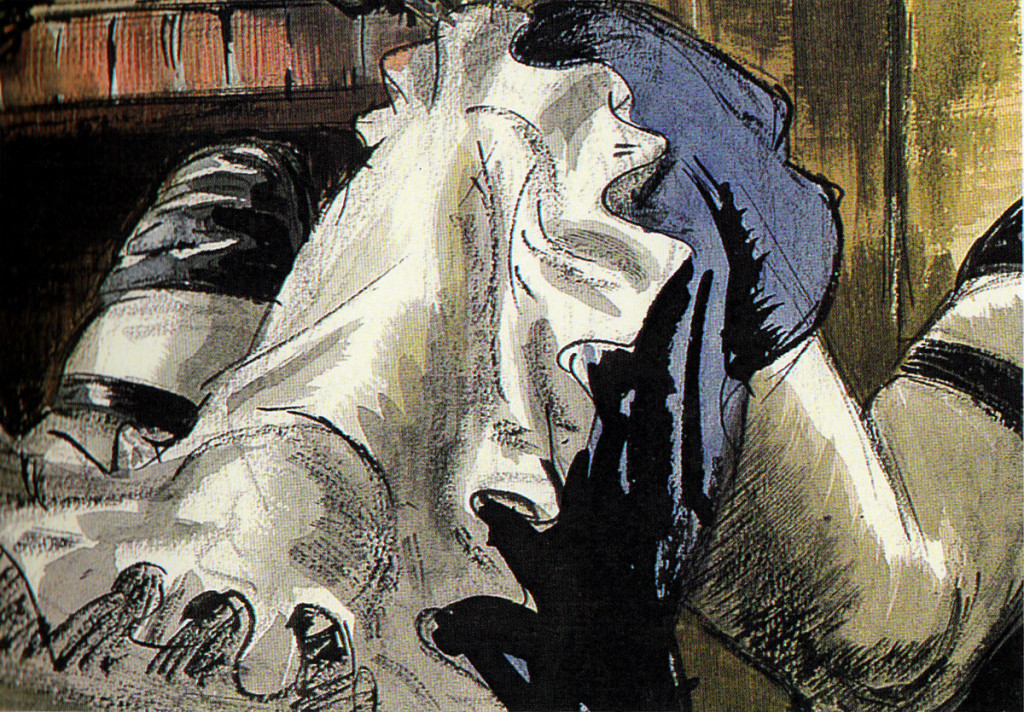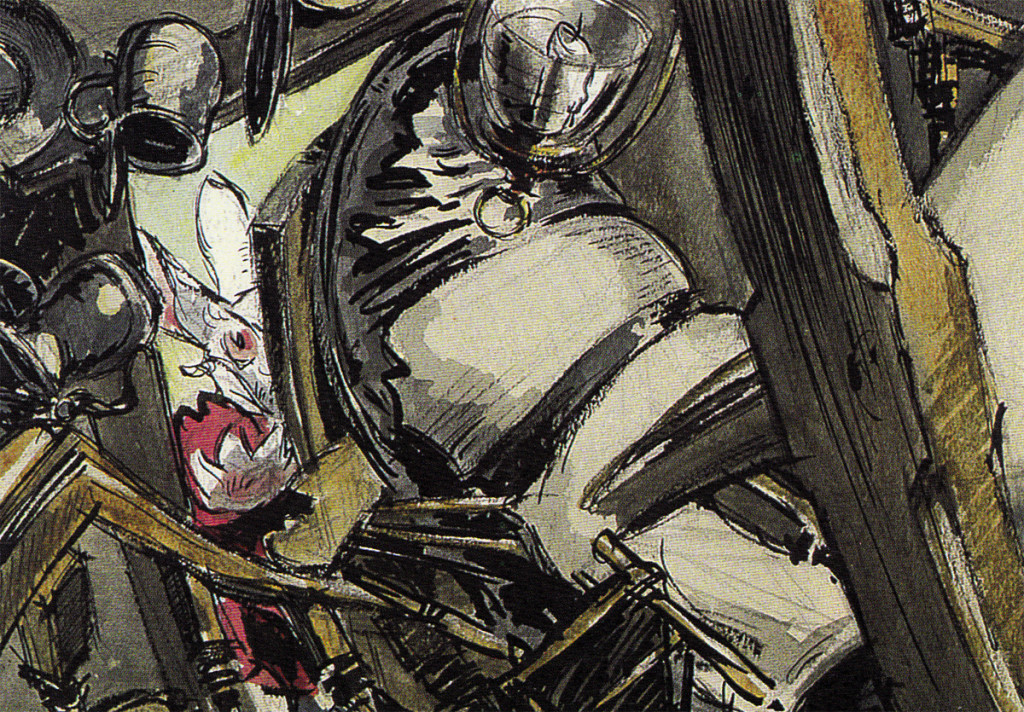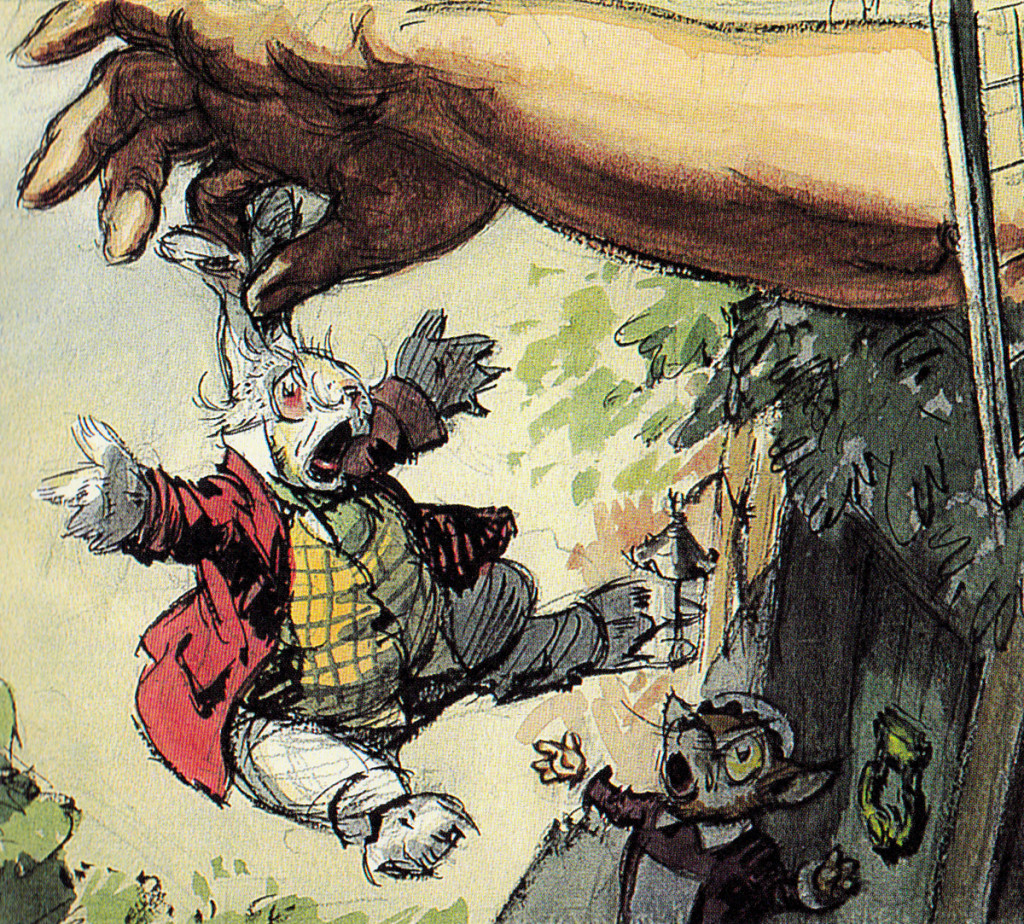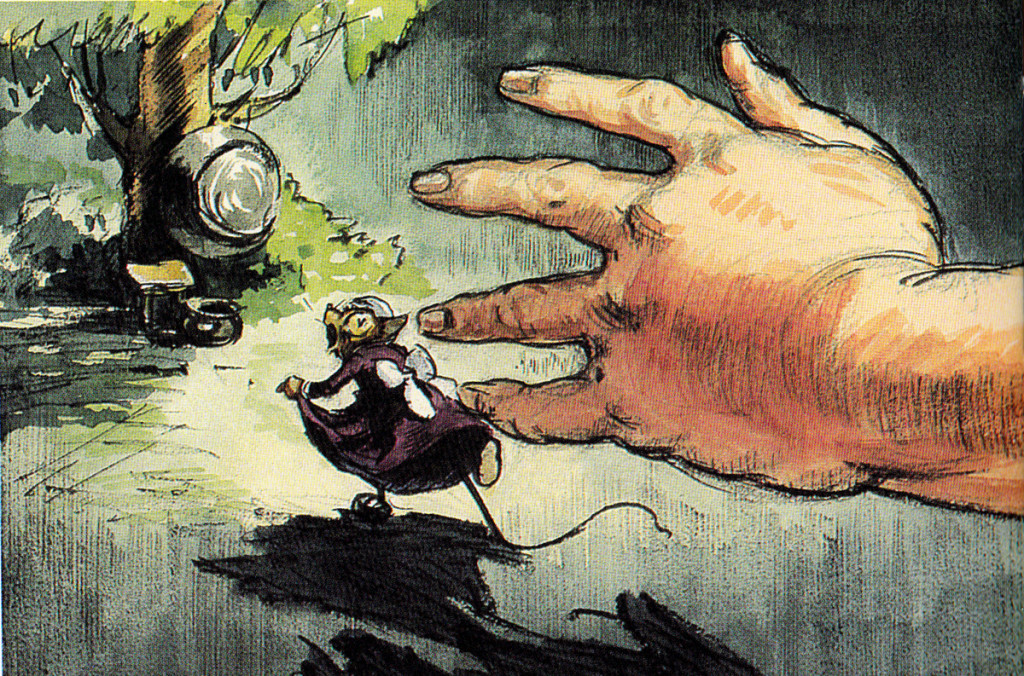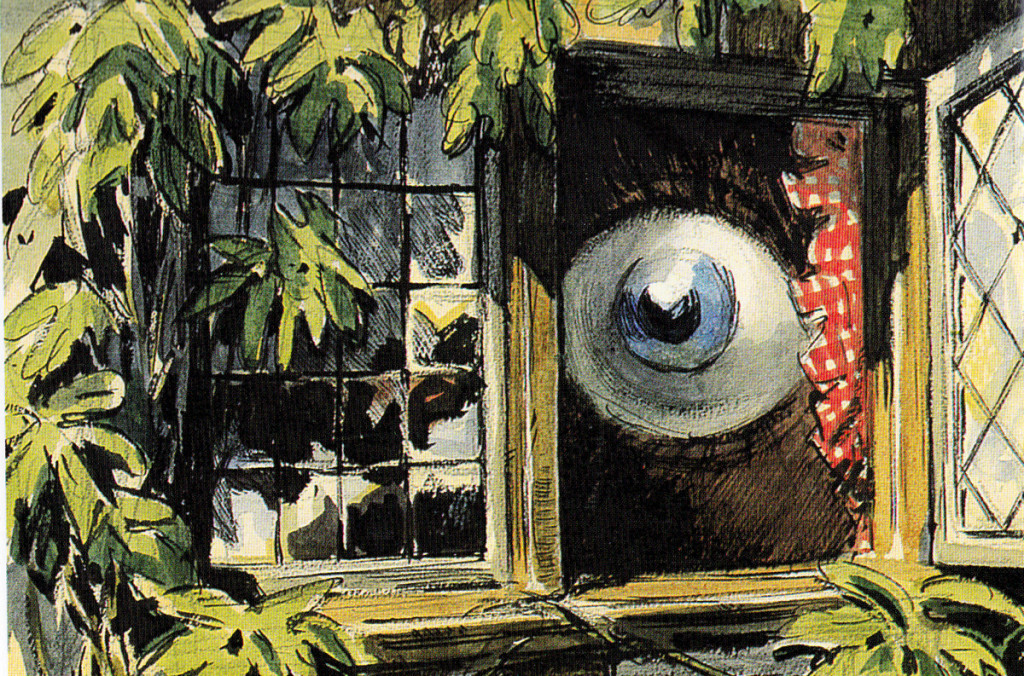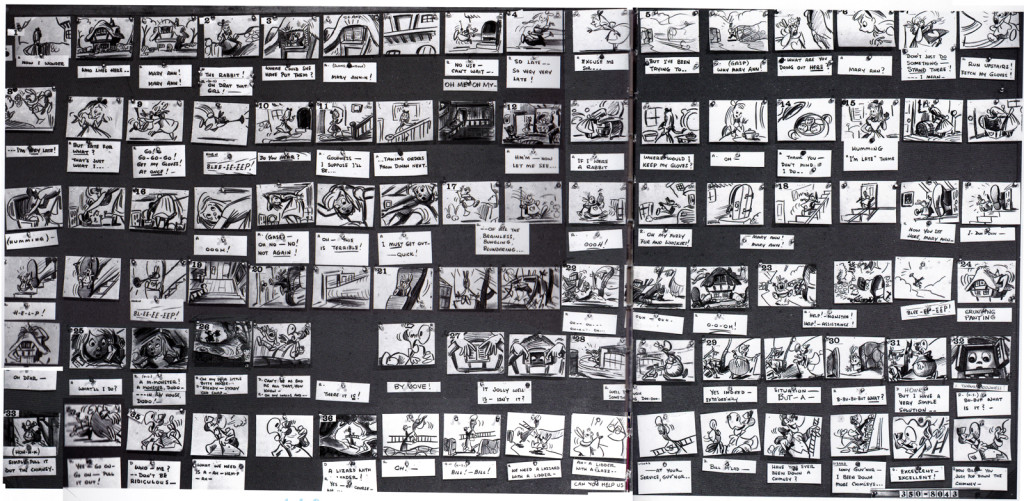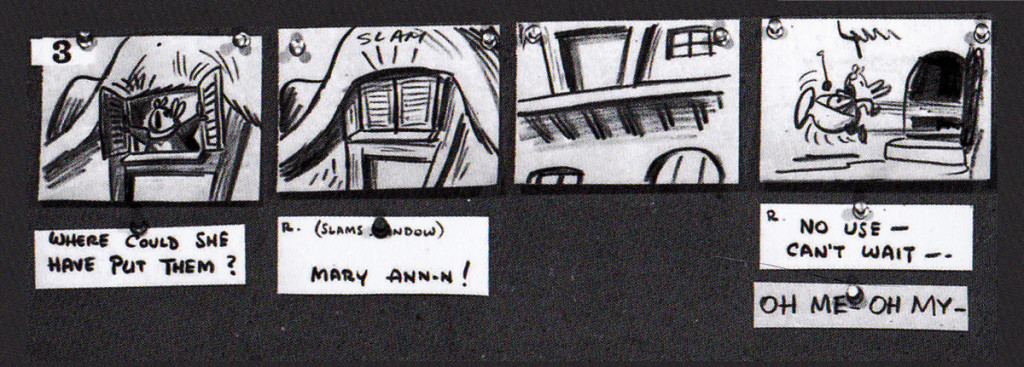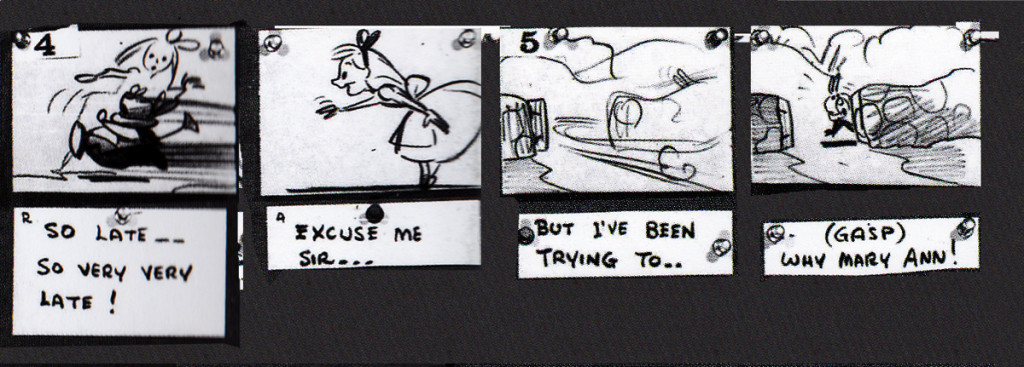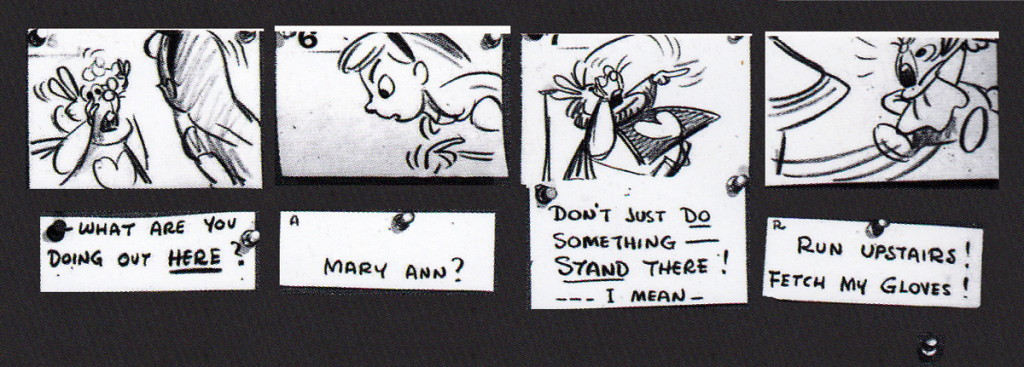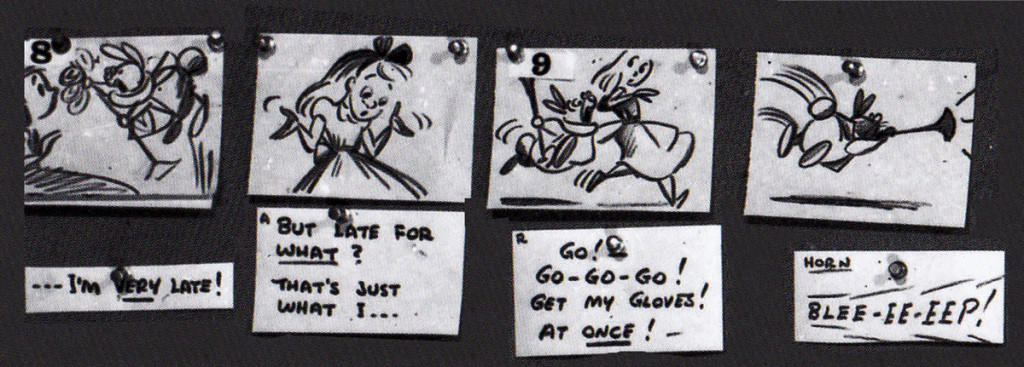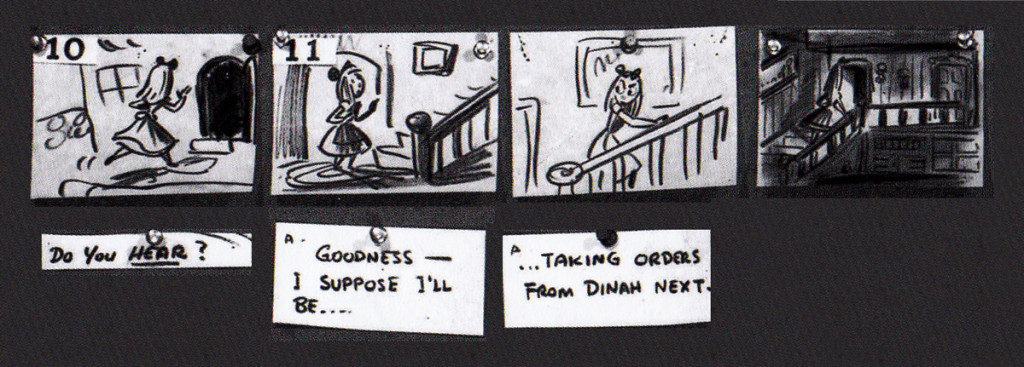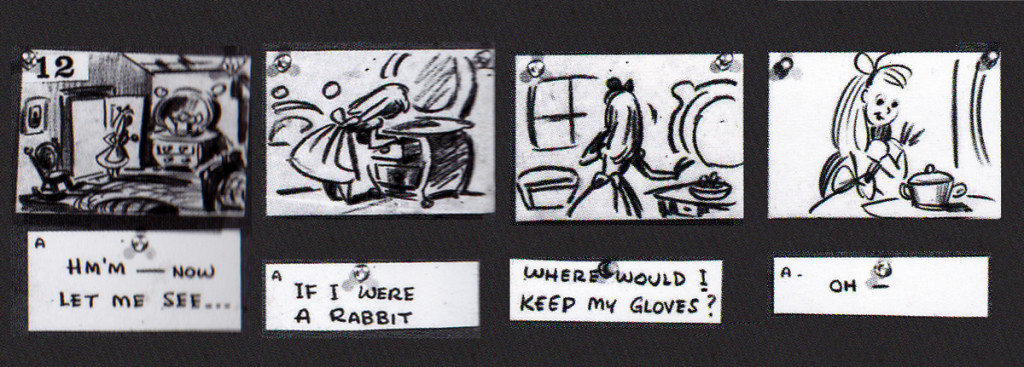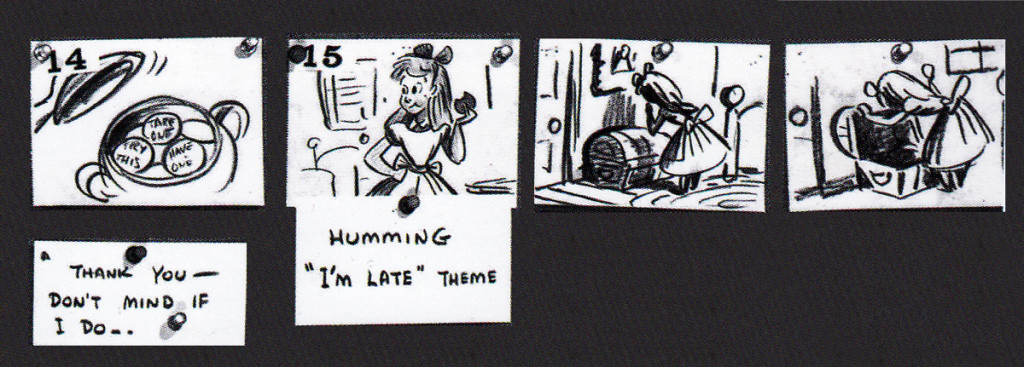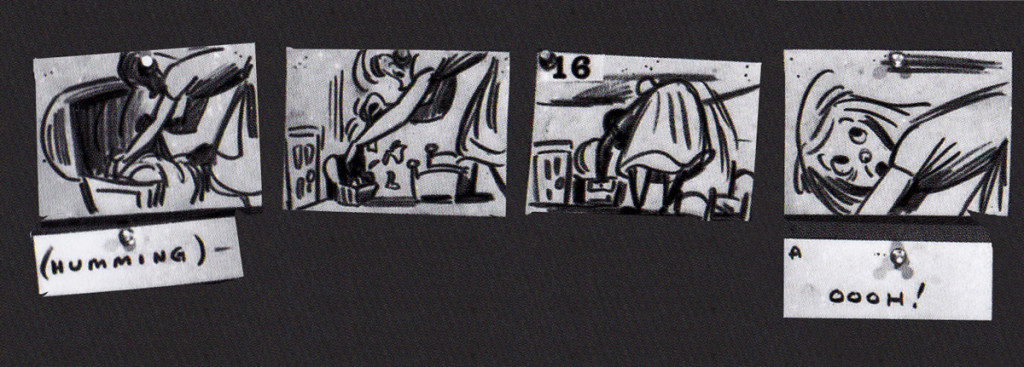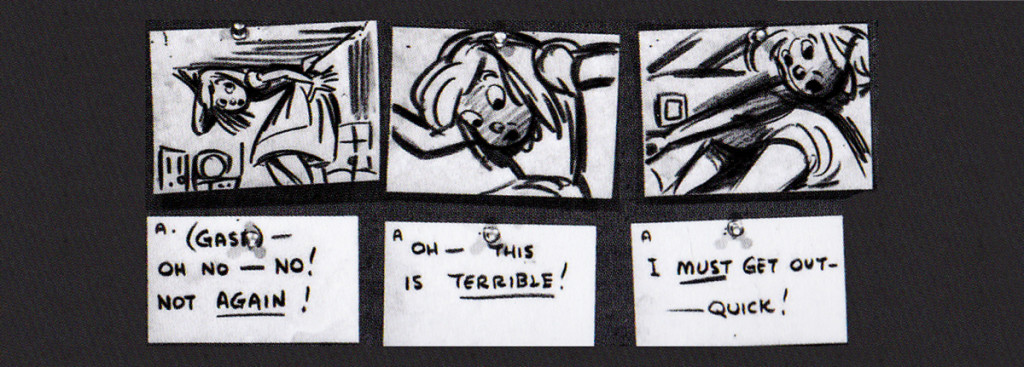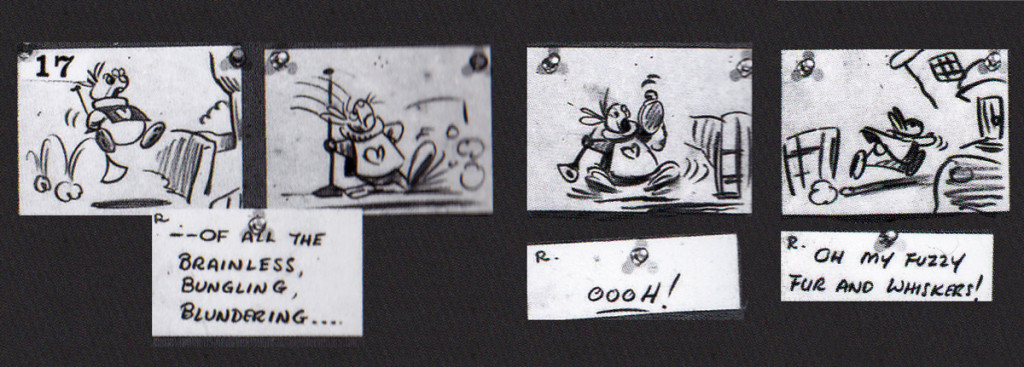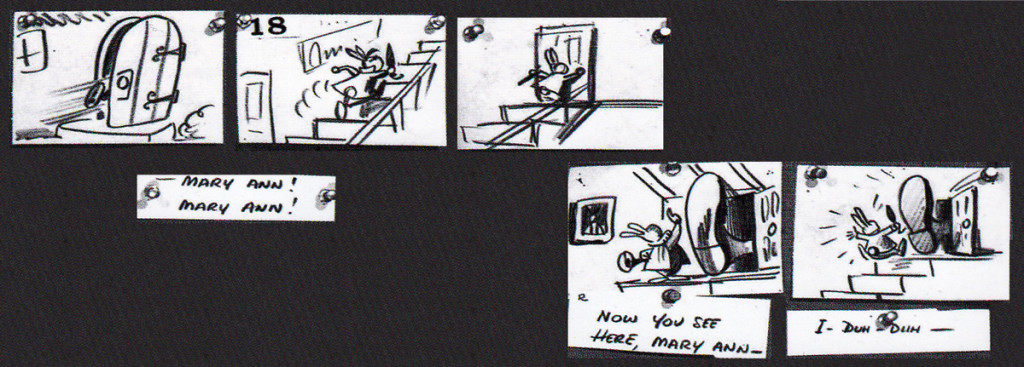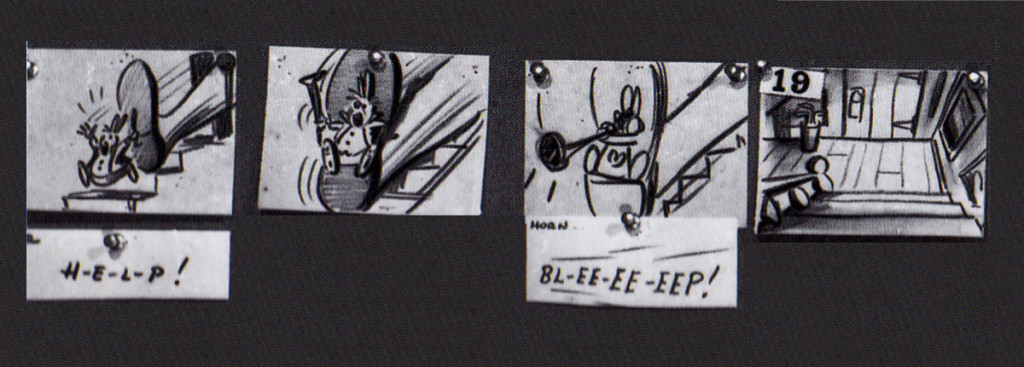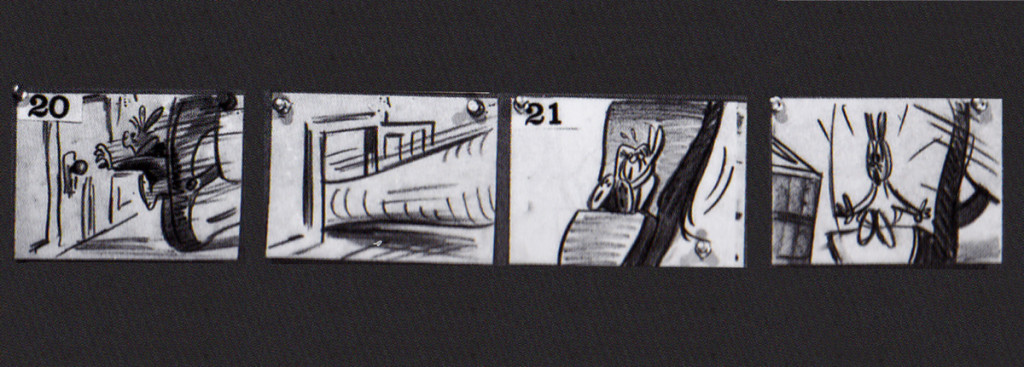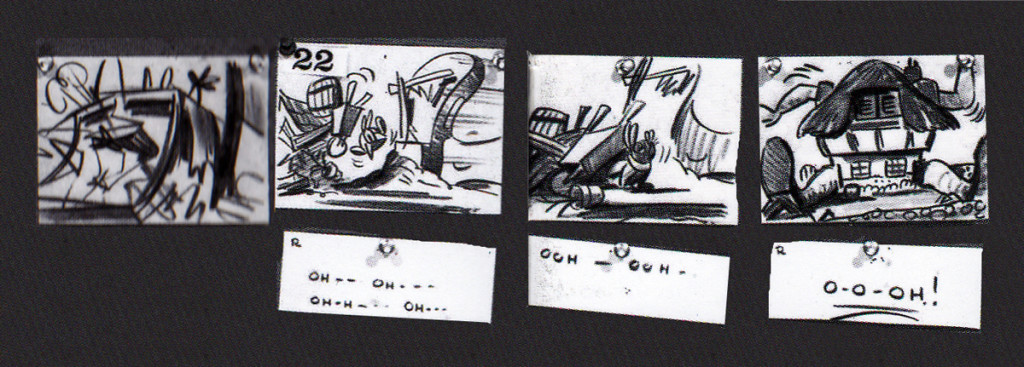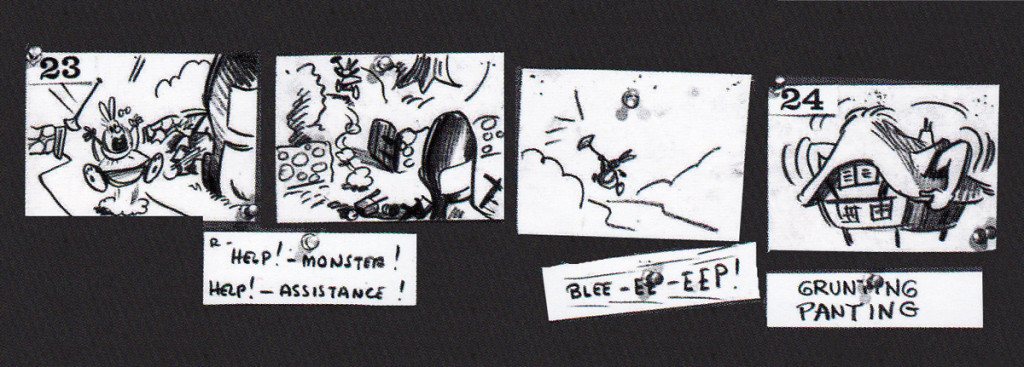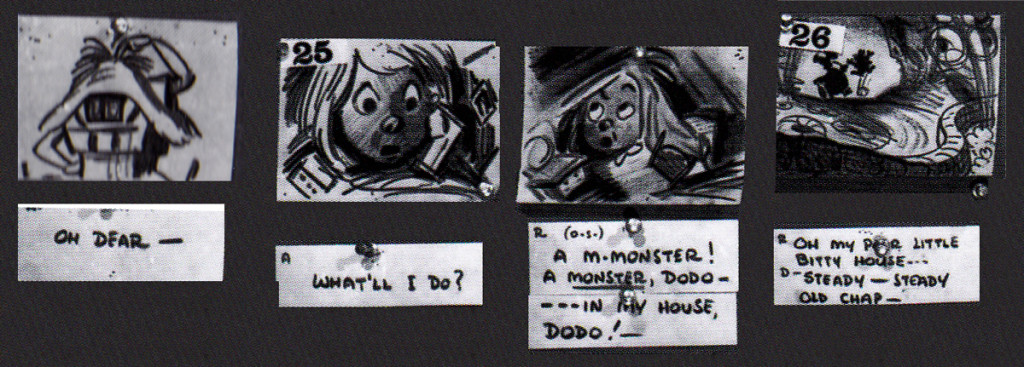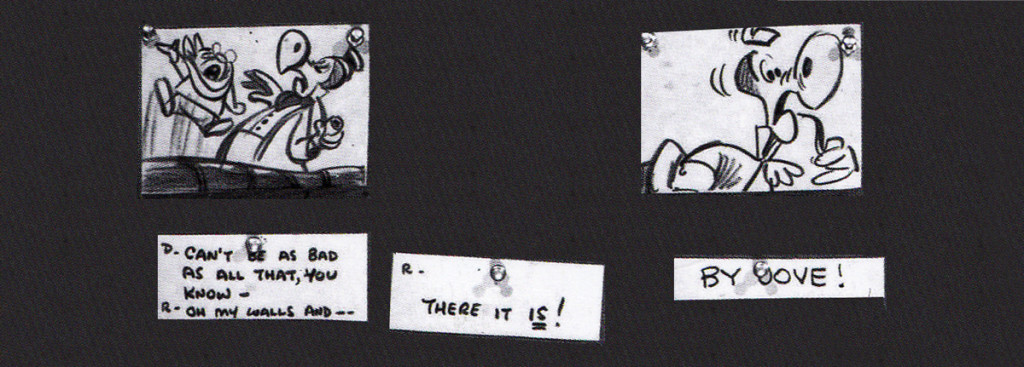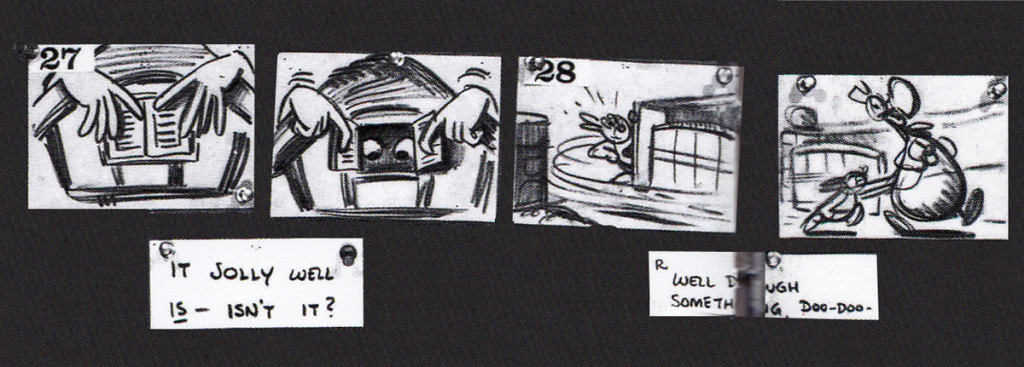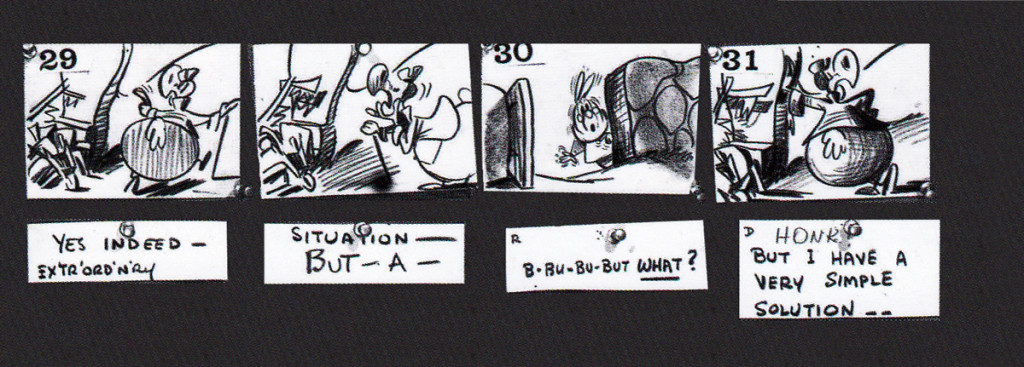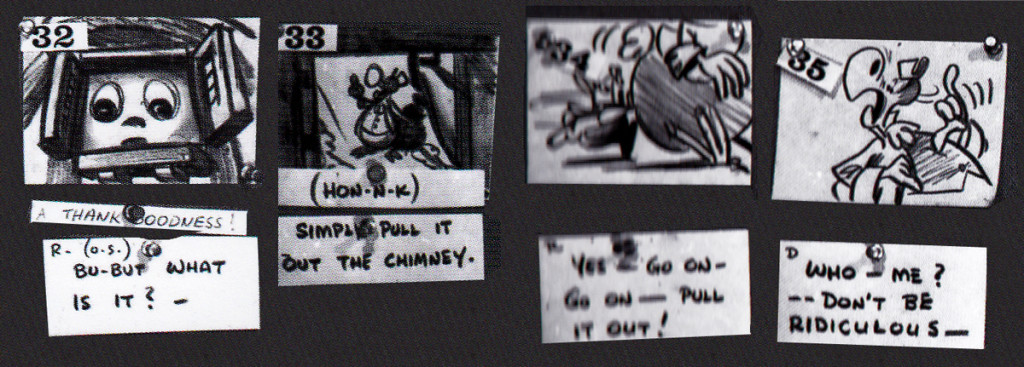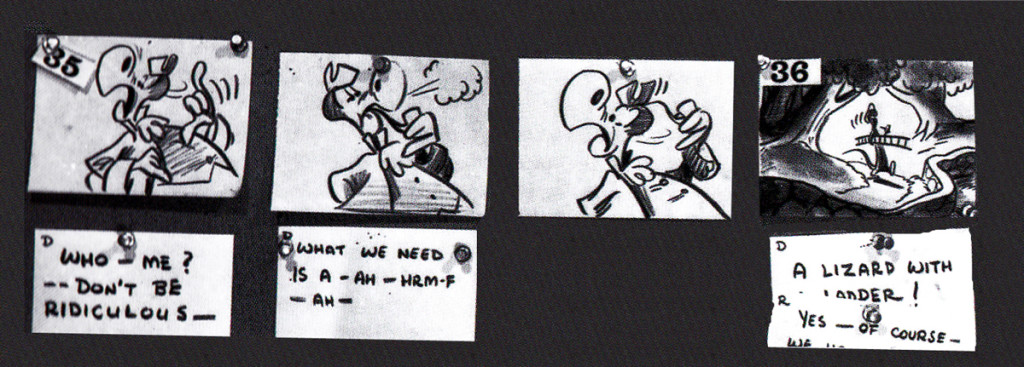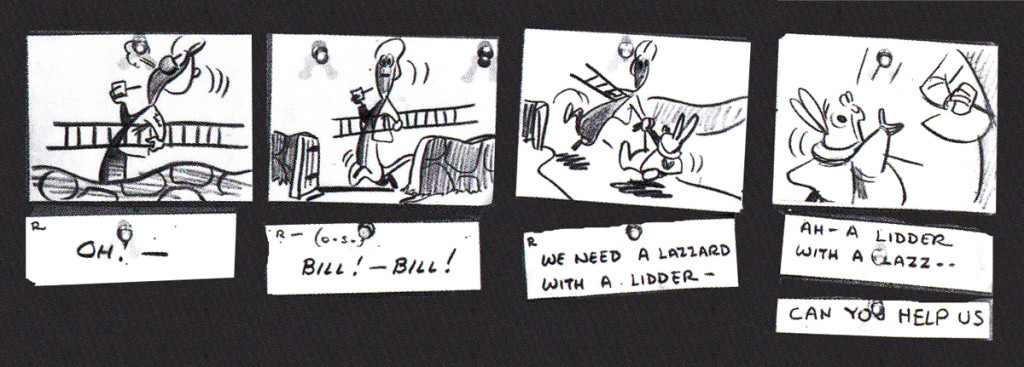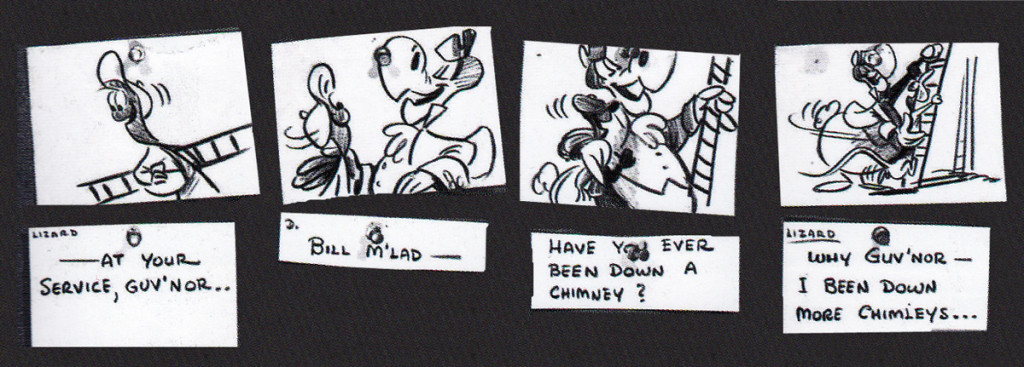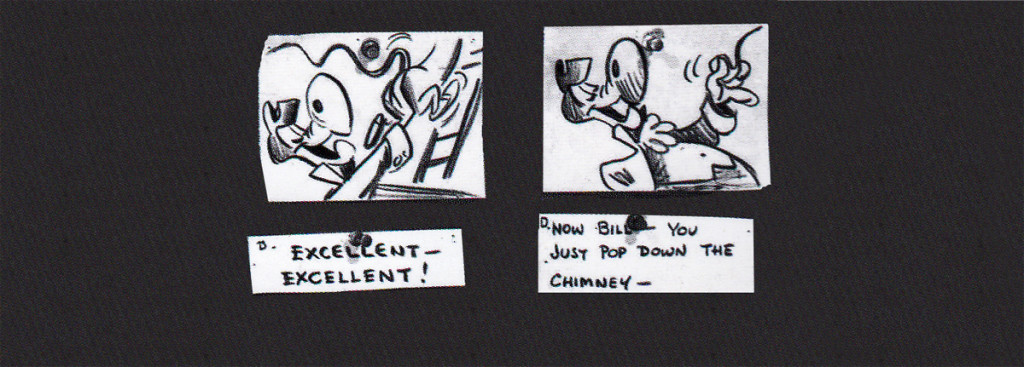Category ArchiveArticles on Animation
Articles on Animation &Commentary &Richard Williams 01 Oct 2013 08:00 am
And do you believe it! They closed the government. Only Chris Matthews can handle it from here upon out!
Tweedledee and Tweedledum
Tweedlededum, can you please introduce yourselves to the court?
Tweedledee
That’s just the problem.
Court
Gasp!
Tweedledum
That’s just the problem; we can’t.
We don’t know who we are anymore!
Believe it or not. They shut down the government.
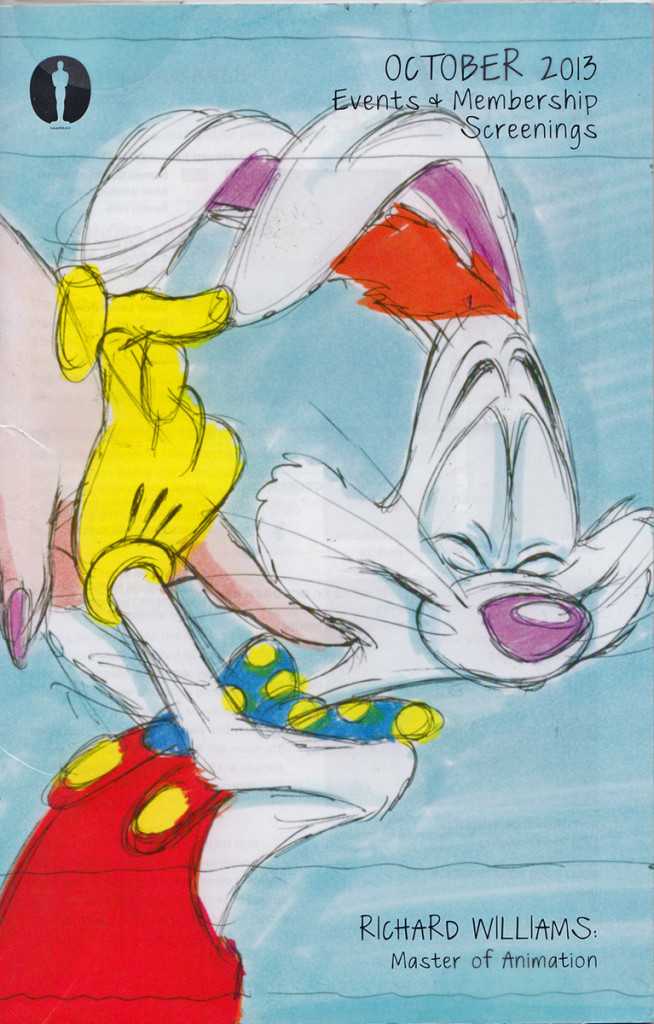 This coming Friday, Oct. 4th, the MP Academy will hold a special screening featuring Richard Williams. Williams will discuss the work that has inspired him and the people who have influenced him. Some of his favorite clips will be shown to illustrate the artistic and emotional range of the medium. From the charm of Snow White and the imagination of Fantasia to the stylization of Rooty Toot Toot and the “subtlety of expression of Toy Story W illiams will also enlighten audiences about his own work through clips from The Little Island, The Charge of the Light Brigade a Christmas Carol and The Thief and the Cobbler (inlcuding its first theatrical trailer, as well as a preview of his work-in-progress, Circus Drawings.
This coming Friday, Oct. 4th, the MP Academy will hold a special screening featuring Richard Williams. Williams will discuss the work that has inspired him and the people who have influenced him. Some of his favorite clips will be shown to illustrate the artistic and emotional range of the medium. From the charm of Snow White and the imagination of Fantasia to the stylization of Rooty Toot Toot and the “subtlety of expression of Toy Story W illiams will also enlighten audiences about his own work through clips from The Little Island, The Charge of the Light Brigade a Christmas Carol and The Thief and the Cobbler (inlcuding its first theatrical trailer, as well as a preview of his work-in-progress, Circus Drawings.
Tickets are $5 for Gen’l Admission and $3 for Academy members. (I’ve just learned that the event is, of course, sold out.
From Oct 4th thru Dec 22nd there will be a gallery showing at the Academy theater, and that can be seen when your schedule permits.
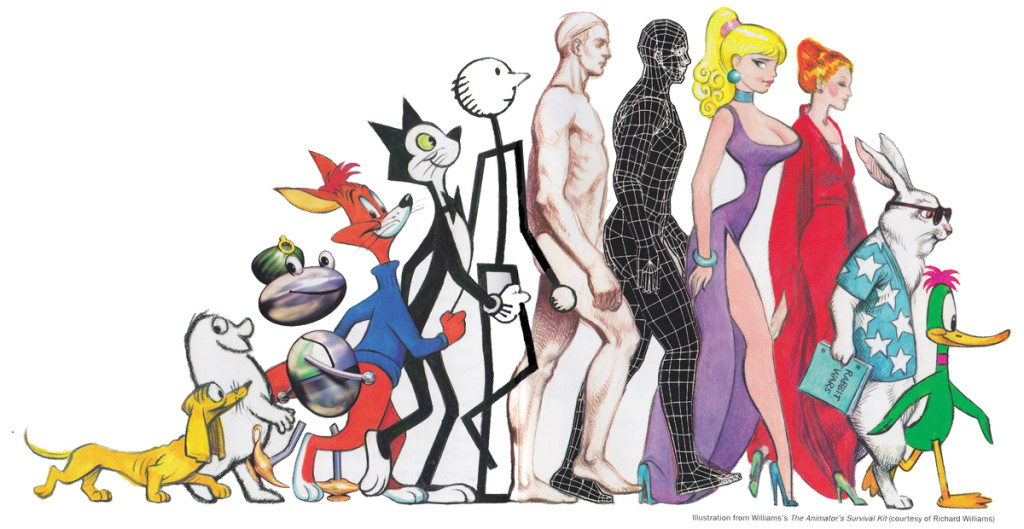
Go here to see three of these vids. Very entertaining.
Animation Artifacts &Articles on Animation &Books &Commentary 23 Sep 2013 08:00 am
Heading Toward WB
Maurice Noble began his art career at Chouinard’s Art Institute. He and Mary Robinson (Blair) followed similar paths at the school. They both moved on to jobs decorating windows of Robinson’s Department Store. Their design styles were in no way similar, but their approaches to the art were. This was during the Great Depression, and there was no chance of getting a raise of salary there to match what ould be earned at Disney, They both moved on to working at Disney’s Studio.
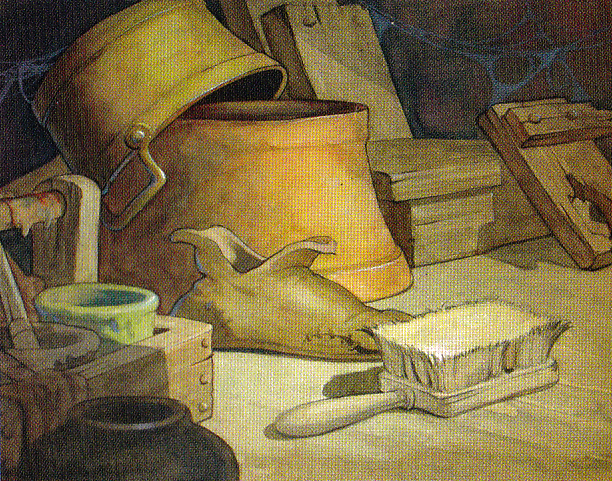 His first assignments were in painting backgrounds for some Silly Symphony cartoons such as Elmer Elephant, Water Babies, The Old Mill and The Country Cousin. All of these were “A” list Symphonies and were certainly plumb assignments within the studio, yet it took Maurice a short bit of time to appreciate the move he’d made toward animation. He soon found himself painting backgrounds on Snow White and designing on Bambi, Pinocchio, Fantasia and Dumbo. On Dumbo he helped to design the Pink Elephants sequence. He developed his personal approach to animation design.
His first assignments were in painting backgrounds for some Silly Symphony cartoons such as Elmer Elephant, Water Babies, The Old Mill and The Country Cousin. All of these were “A” list Symphonies and were certainly plumb assignments within the studio, yet it took Maurice a short bit of time to appreciate the move he’d made toward animation. He soon found himself painting backgrounds on Snow White and designing on Bambi, Pinocchio, Fantasia and Dumbo. On Dumbo he helped to design the Pink Elephants sequence. He developed his personal approach to animation design.
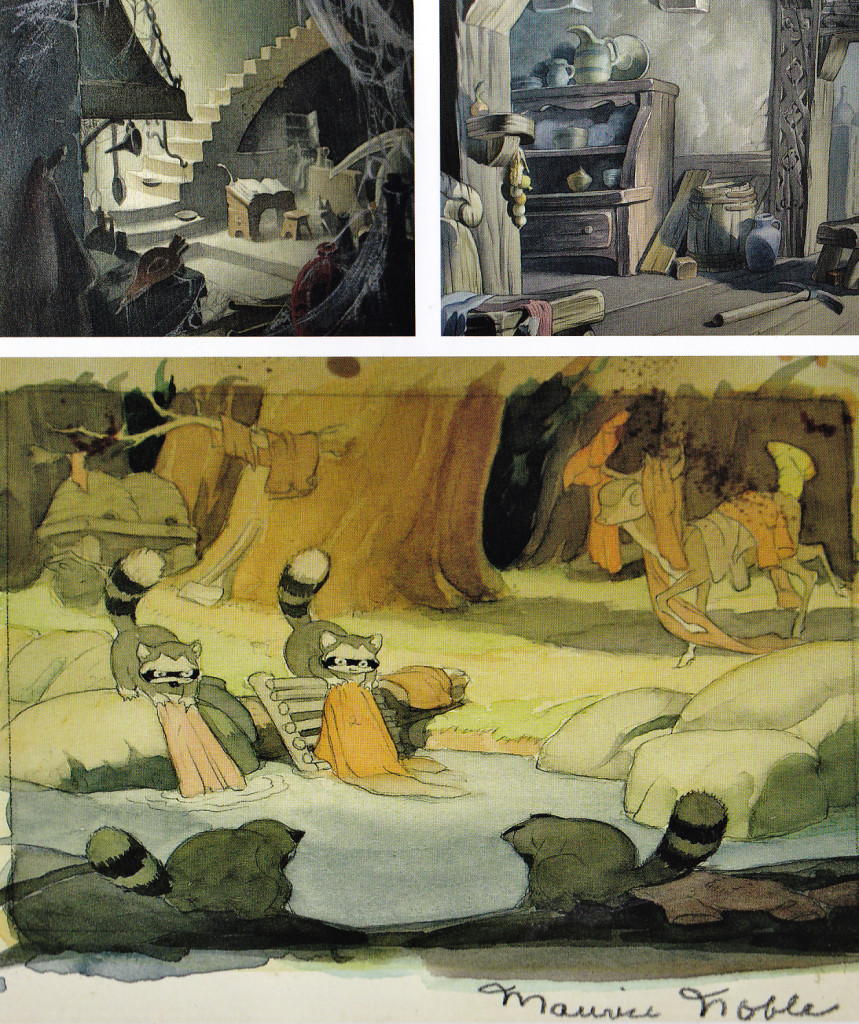
Selected art by Noble from Snow White
There was also a legendary screening, set up by Frank Lloyd Wright, attended by many at the Disney design group, of a Russian animated film called The Tale of Czar Durandai. This 1934 short film was directed by the famous Ivan Vanov-Vano. John Hubley also used thisfilm as an example of inspirational work for the animation he was to do.
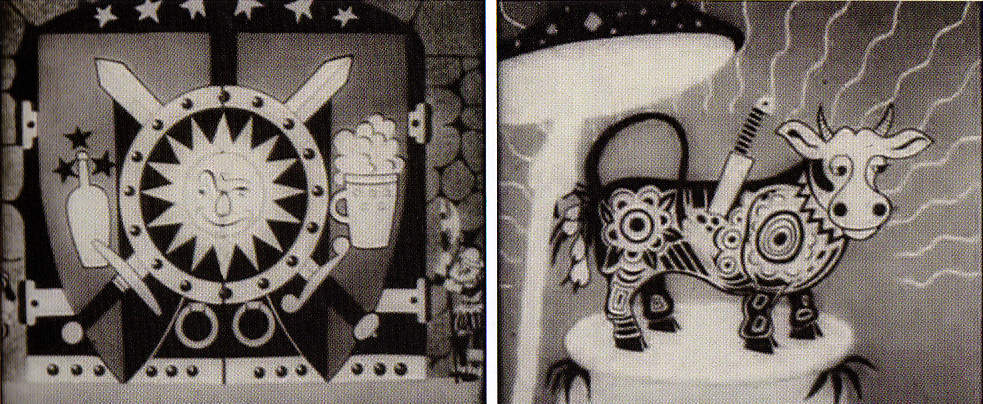
The Tale of Czar Durandel
Maurice Noble had also participated in the strike at Disney’s. When it was over, he was given a second-rate office, and it was obvious he was no longer in high demand at the Studio. He sat doing nothing for quite some time before receiving severance pay. He then joined the Signal Corps to work for the Army. The aggregation of artists who had joined the group was a top-notch selection of excellent designers all of whom were committed to 20th Century Art in animation. Animation had joined the Modernist movement, and was on its way to producing “adult” fare.
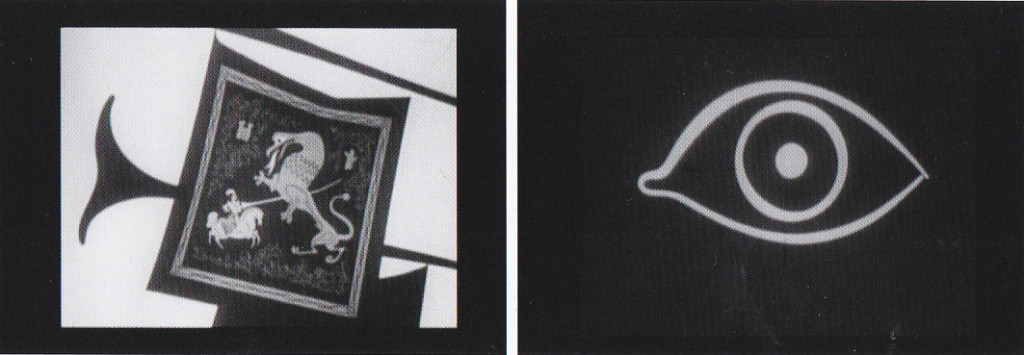
A Few Quick Facts About Fear was a short produced/directed by Zach Schwartz
which took complete use of the new approach to artwork in animation.
Noble worked with Zach Schwartz on a film which led the way to the new approach to animation art. The film was done purposefully in B&W using a bold approach to the art.
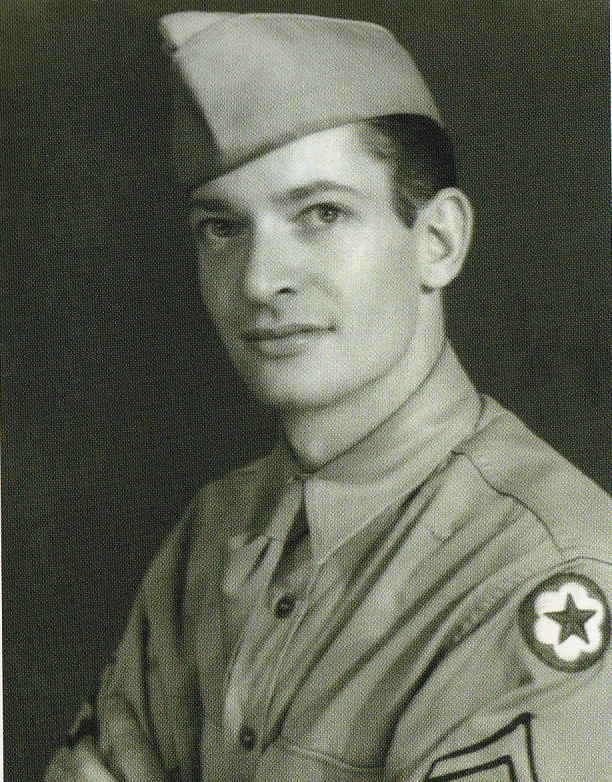
Maurice Noble in the SignalCorps.
Articles on Animation &Chuck Jones &Commentary 12 Sep 2013 12:31 am
Saturday Notes on Thursday
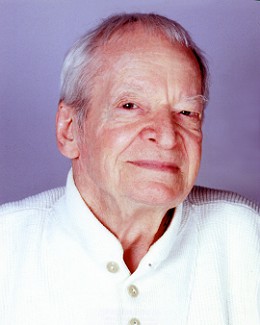 How wonderful and appropriate it is to receive this biography of Maurice Noble in the mail. Such beautiful art that only works within the confines of the films being reviewed.
How wonderful and appropriate it is to receive this biography of Maurice Noble in the mail. Such beautiful art that only works within the confines of the films being reviewed.
So often I play foolish rhyming games with myself and allow odd configurations to pop out of the type quickly passing in front of me. When I received this book the subtitle quickly gave me pause, “The Noble Approach. Maurice Noble the art and death of Animation Design.. Of course it took less than a second for the correct title to return to the cover in front of me. “Maurice Noble, the Zen of Animation Design.
Where did I get “death from” in those back recesses of my mind? Maurice Noble was probably the last of the GREAT designers from our masters’ age. Great artists like Rowland Wilson and Hans Bacher shape and form a movie and are responsible for much of the greatness that grows with the films they’re developing. Chuck Jones got a lot of glory; Maurice Noble brought the brilliance.
I’ve already started a series around Noble in honor of the excellent book released by Chronicle. I’m going to continue whole posts around the man’s art. There are at least another 4 das worth of information I have to get across, even if it’s just posting stills. Bear with my slow pace on it.
Botanical Party
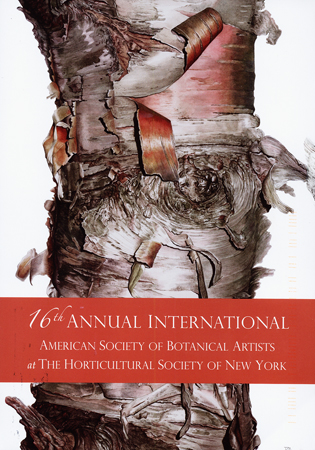
The NY Botanical Garden is ready to have its 16th Annual Internationa American Society of Botanical Artists at the Horticultural Socidty of NY (better known as the Botanical Gardens to you.)
This will take place on Sept 20th and run through November 22nd, 2013.
Dick Rauh, our first ASIFA-East President (and the longest to hold that esteemed position) is represented, as ever, with a beautiful work. His is the beautiful work you’ll be looking for. It’s a good opening night party you’re invited to on Sept 20th from 6 to 8 PM.
Rocky Road of Impatience
Thanks to Jerry Beck‘s Cartoon Research, we’ve learned that Darrell Van Citters is putting together a book on the films of Jay Ward. Van Citters’ book on Mister Magoo’s Christmas Carol is surely one of the best books about animation to have reached market. The material was not very easy to reach, and there was plenty of factual information that well informed those who were interested.
That most definitely was me. I can remember waiting quite impatiently for the Magoo film to reach television, and I felt fully satisfied when the material played on screen.
Now there’s a promise of the jackpot of material about Jay Ward and the work that small but wacky and very intelligent crew turned out. There’s been nothing like it and I look forward to the book form, impatientl.
I’d feasted on the written material in Keith Scott‘s well written book about Ward and his cohorts (The Moose that Roared) and certainly wanted more. Now we may have found it via the intelligent writing of Mr. Van Citters.
Articles on Animation &Commentary &Frame Grabs 07 Sep 2013 02:24 am
Saturday Comments Live
Well, today’s Saturday, and I actually have a realio trulio live blog post for the day. We were able to get Verizon in to trip over their own shoelaces and figure out what was causing our phone problems. But they came through with blazing colors, and here we go again. Now I hope we can, at least, make it through the next week without having to shut down again.
More on St. Louis
I received a surprise check this week from the St. Louis Animation Film Festival.
 Maybe you’ll remember that we had to leave St. Louis in the middle of the night. Because of some enormous pain I was getting from an operation I’d had in NY, just the week before, doctors had to retrace their steps. The Festival felt that they should cover any overage costs that it took to get me into NY and onto Beth Israel’s operating table. The Festival folk couldn’t have been more generous. I was embarrassed just to have to pull out the way I did. They made it more than alright by covering extra travel costs that caught me unawares
Maybe you’ll remember that we had to leave St. Louis in the middle of the night. Because of some enormous pain I was getting from an operation I’d had in NY, just the week before, doctors had to retrace their steps. The Festival felt that they should cover any overage costs that it took to get me into NY and onto Beth Israel’s operating table. The Festival folk couldn’t have been more generous. I was embarrassed just to have to pull out the way I did. They made it more than alright by covering extra travel costs that caught me unawares
The award was made especially for me. and had just gone out via FedEx. The award celebrates my career with by illustrating my in-production film. Illustrated by a local talent, it depicts Vincent Price in the E.A.Poe position lookin’ over me. My new guardian angel will be looking out for me from my office wall. It’s working guys; it’s working.
The film isn’t even finished yet, and already it has an Award. Thanks to you.
Cliff Froehlich and the rest of his staff are first class people, I can guarantee that! Thank you Cliff and anyone else involved.
The commercial for “Christian Mingle” animation looks like it was pulled from the 60′s animated short, Nathan A]exander Davidson and his wife, done at their company, Zone One Oni Designs.
Christian Mingles lasts less than 20 secs whereas Cosmic Cartoon lasted almost 20. Both use lots of hand-done air brushing done on top of cels and photographed traditionally. At least, I know that’s how Cosmic Cartoon was done; you can’t really tell with the Christian dating service ad. One presumes they’re now using a computer for artwork and effects. Regardless, it’s a top-rate spot.
I’m sure the full film is out there somewhere on YouTube.
If Fred Ladd, John Lisberger or anyone else connected with the film want to give us more info, I’d love to see it in the comment section.
The same is true of Nathan Alexander Davidson. Tell us what you’re up to now. Any more such spots in the works?
I still haven’t gotten over the retirement of Hayao Miyazaki this past week. There are very few animation directors, historically, that I can think of whose influence was as far reaching and key to the art of the medium. There are enough live action film makers whose work was consistent and moving over a consistent number of themes. John Ford, Alfred Hitchcock, Howard Hawks and George Cukor
I’ll talk about this at length in the upcoming posts. The director’s influence has been too great on me to not pay great attention. (It’s at a time like this that I wish the late, great Tissa David were still around so that we could recap our thoughts with each other.)
Articles on Animation &Commentary &repeated posts 02 Sep 2013 01:12 am
Labor Day Reader
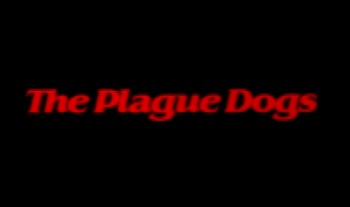 - I’ve been watching some older animated features lately. Plague Dogs, I thought, deserved another chance, so I rented the DVD. I was right. The film is a very odd one.
- I’ve been watching some older animated features lately. Plague Dogs, I thought, deserved another chance, so I rented the DVD. I was right. The film is a very odd one.
Surprisingly, despite the depressing subject, I found myself unattached to the story’s emotions. I would guess it has to do with the direction of he work.
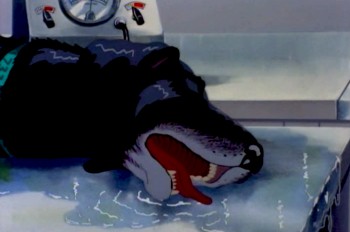
The film starts with one of our two lead characters
in deep trouble in the laboratory.
The story is essentially the story of two dogs who escape a laboratory that experiments on animals, and they make their way across the British countryside while teams of people search for them. One of the dogs has been inflicted with a plague bacteria and could spread the disease outside of the lab.
The story is told through a sort-of narration done in a very clever way. Disconnected human voices talking about the situation are used as voice over. We don’t often see who’s talking but we hear their voices. There are times where the voices start and we join the speakers in their conversations. The two dogs communicate with each other and a fox, who helps them in their escape.
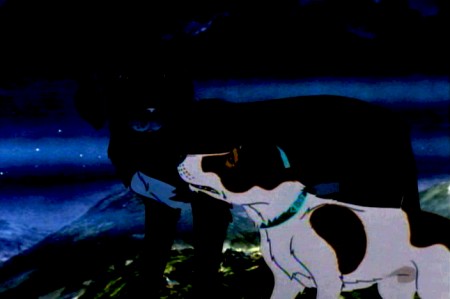
The dogs escape and travel the back roads in the mountains.
The animation throughout is just about serviceable. No scenes really shine even though there are a couple of standout names in the credits – including Brad Bird, Tony Guy and Retta Scott – as animators.
The film was a follow-up project for producer/director, Martin Rosen. He was the original producer of Watership Down, and his ego allowed him to think he could direct that film better than John Hubley, who was fired within the first six months.
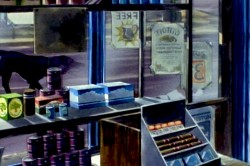
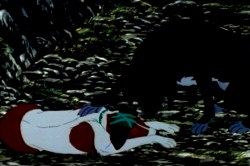
There’s the constant play between the traveling dogs
and the humans who talk about their roaming the countryside.
It’s no surprise that Plague Dogs includes no poetic scenes such as the introduction and the “Bright Eyes” sequences of Watership Down. It’s all down and heavy, done with a lack of grace. Yet, despite this there are several very clever devices for keeping the story moving forward. It would have been nice to see what better animation and a better director might have brought to it.
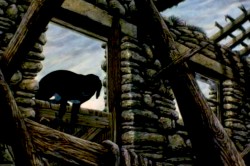
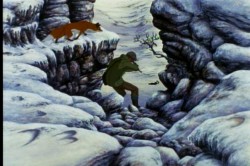
However, the film’s tough subject matter was sure to bring back poor business, and there’s no surprise in its low grosses at the box office. However, as I’ve said, the film deserves another look.
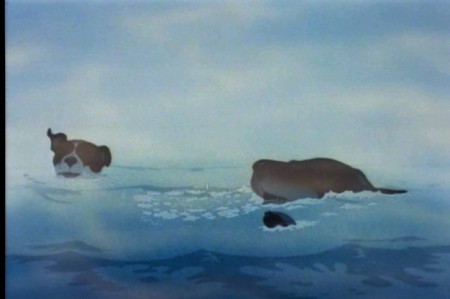
The film gasps for air with the heavy approach, though it deserves
praise for trying to be different and take animation seriously.
I can remember being in England, mixing the voice track of Tim Curry for that film. The recording engineer talked about having to sit through Plague Dogs so many times while mixing it, and explaining how the film had to fail at the box office. He talked in similar terms about When the Wind Blows which, at the least, had Raymond Briggs and David Bowie behind it. Not quite such a miserable failure as Plague Dogs, it still didn’t do well.
I’d always thought that “Doctor Rat” by William Kotzwinkle would have made a better animals-escape-lab story. It’s certainly a better read.
Articles on Animation &Books &Chuck Jones &Illustration 27 Aug 2013 11:11 pm
More Than the Scenery
I am a fan of the work of John Ford. If I’m caught catching a minute of one of his films, you’ll see me stay through to the end. Likewise I have almost as great a respect for the animation design work of Maurice Noble.
It never fails. I get to the point where I’ve just about run out of hope for animation, and I feel like the greatest pessimist in the world. When I say “animation,” I mean 2D. Every frame is controlled by one person. The rest – cgi – is, to me a graphic effect, electronic puppetry. I’m certainly not talking about the overacted cg action you see in most films done today. Most animation to me, these days, is something that’s done in a computer by teams of people, and isn’t wholly designed as “personal.” There are, of course, the exceptions. When something like THE LIFE OF PI shows up, it feels like magic; the magic you expect of great animation.
There’s just too much of everything in most current animation; even the flash Mickey Mouse spots go too fast with their Zips, Pans, Takes; the simplest move seems to go over the edge. Gestures are bigger than they need be, actions are over the top, dialogue is too loud and frenzied unless it wants to be quiet – then, it really is dead. The animator became that big red button they have at “Staples.” You press it and the client can fix what he has to – his way. The poetry has vanished from the art form when this animation begins. Too bad there’s no personality in those big red buttons.
John Ford made some of the most beautiful movies we have on film. Many of these are Westerns, Westerns which notably featured some of the most extraordinary, natural land masses photographed. The incredible buttes and sights appear in the Arizona Desert, called “The Painted Desert”, and whether they were shot in the glorious golds, violets and other colors or even shot in B&W they add extraordinary sights to these films. If they weren’t already there, constructed and painted by some god, Ford would have had to have a mass of people construct these images.
Working to a better advantage is the art director Maurice Noble who created his original version of the “Painted Desert” mostly out of his own imagination. I suspect he and a couple of other artists were all it took to develop these animated scenics: far fewer people and a lot less time.
As I said, Noble’s desert was original, a recreation of the actual “Painted Dessert” but one that developed out of Noble’s imagination. These are almost as beautiful as the real thing, in that “design-y” way Noble’s art had.
So here we have two film plans. Elaborate impersonal scenery that was designed by Mother Nature, vs the personal designs delicately designed by Maurice Noble. Both are very different but have similar effects on the films they inhabited. A personal world Ford shares with us and another that Noble constructs for the backdrops of the Coyote and Road Runner. Both set designs are larger than life and full of that very-same-life. It’s in gloriously wonderful color (even thoughmany of these sets were shot in B&W) it’s just the beginning of the strength of these films. We’ll look further to see what more has been offerred to us in their films.
Animation &Animation Artifacts &Art Art &Articles on Animation 05 Aug 2013 11:35 pm
King of the Woild

I received an extraordinary award from the The St. Louis Film Festival. This is proof positive that I am the world’s greatest animator. Bill Plympton received the only other one of these awards some three years ago. My current one makes me a true original. (Somehow I ended up as Vincent Price, but I don’t mind so much. It’s an attractive and large – the key word being large = award. When the award makes it to New York, I’ll post it so you can get a look.
Sorry for the delay in some of the new and recent posts. I’m afraid there will be more to come before everything actually gets new.
Action Analysis &Animation &Articles on Animation &Commentary 07 Jul 2013 05:00 am
Two Tier Tyre
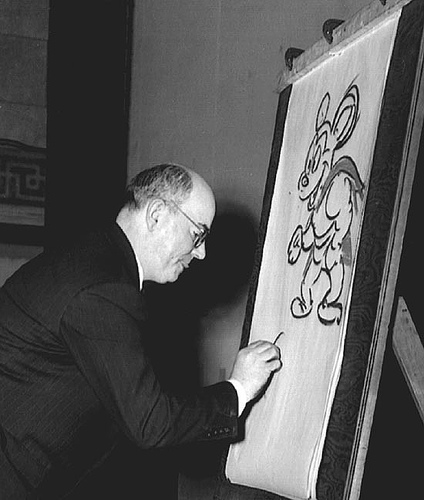 – Somehow always touching in the back corners of the recesses of my mind is the work of Jim Tyer. He’s possibly the most well-known animator in the medium’s short history. The guy has done such eccentric work that it’s impossible to find someone comparable. Even to those who don’t realize they’re mimicking his work, they would be surprised to learn that they’re doing Jim Tyre and not Tex Avery or Bob Clampett and Rod Scribner.
– Somehow always touching in the back corners of the recesses of my mind is the work of Jim Tyer. He’s possibly the most well-known animator in the medium’s short history. The guy has done such eccentric work that it’s impossible to find someone comparable. Even to those who don’t realize they’re mimicking his work, they would be surprised to learn that they’re doing Jim Tyre and not Tex Avery or Bob Clampett and Rod Scribner.
A number of things have been written about Jim Tyer. Interestingly, it’s predominantly the same few people that seem to be writing and usually the same bits are repeated.
Chief among sites that offers bits and comics among their offerings, is Kevin Langley‘s Cartoons Comics and Model Sheets. This blog first caught my attention with plenty of Mr. Tyer’s imaginative drawing. Not quite rough, not quite gesture drawing, and certainly not rendering. The best one could say was Wacko.
You see I’d been an ardent enthusiast of Mr. Tyer’s work for years, and here they were – stills. Plenty of them. So there were lots and lots of links. You can’t really write lots of words when processing Jim Tyer’s material. As a matter of fact, I can only think of one pwerson who did that job and did an impeccable turn of it. Mark Mayerson.
As a matter of fact, you might want to stop reading here and go to Mark’s comments, now. He had two key things to say and no one else has had much more to say to me. It’s a paper he wrote in 1990 and with it he had more to say about Jim Tyer‘s work than had anyone else to that date.
I meant for this piece to be much more exhaustive, but the problems I’m having with my internet are annoying. Unfinished pieces have been thrown up as complete. This is one of them, the Provenson piece (though that’s much more finished) made it to post, and others as well. I may quit writing at all until Verizon finally comes to my door to correct my phone service. (I still don’t have an operating phone number after three weeks and my internet is intermittently up and down based on its own whim.)
I apologize for the sloppiness of the whole thing.
Articles on Animation &Disney &John Canemaker 05 Jul 2013 03:23 pm
John Parr Miller
This post will stay up Saturday as well – until Verizon gets its stuff together.
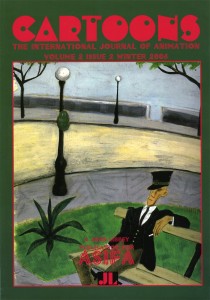 - John Canemaker contributed a two part article on J.P. Miller to Cartoons, the International Journal of Animation published by ASIFA Int’l. The two part article appeared in the Winter 2006 and Spring 2007 issues.
- John Canemaker contributed a two part article on J.P. Miller to Cartoons, the International Journal of Animation published by ASIFA Int’l. The two part article appeared in the Winter 2006 and Spring 2007 issues.
John Parr Miller was a designer who worked at the Disney studio from 1934 to 1942 as part of Joe Grant’s elite Character Model Department. After his service in WWII, he became a children’s book designer and author remaining in that field for the remainder of his life.
J.P. Miller’s career at Disney’s is not something we often hear about, and I think the information in John’s extended article is so valuable that it has to get out there even further and be shared more openly. Consequently, with John’s permission, I’m posting both parts.
This is part 1:
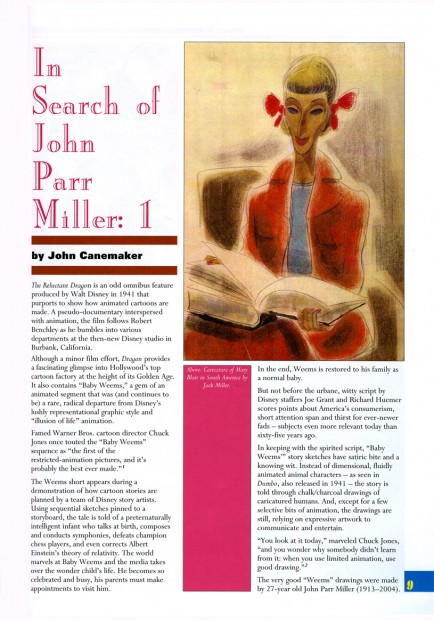 1
1(Click any image to enlarge.)
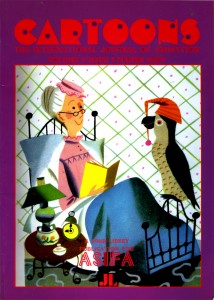 - Last week I posted the first part of a two-part article written by John Canemaker for the magazine, Cartoons, the International Journal of Animation published by ASIFA Int’l. The two part article appeared in the Winter 2006 and Spring 2007 issues. (See Part 1 here.)
- Last week I posted the first part of a two-part article written by John Canemaker for the magazine, Cartoons, the International Journal of Animation published by ASIFA Int’l. The two part article appeared in the Winter 2006 and Spring 2007 issues. (See Part 1 here.)
John Parr Miller worked at the Disney studio from 1934 to 1942 as part of the Character Model Department run by Joe Grant. After Miller’s service in WWII, he designed and illustrated many children’s books and he continued in that field for the remainder of his life.
This is an extraordinarily well-researched article by John Canemaker, and I’m pleased to post it here for all those who don’t have access to the magazine, Cartoons. Thanks go to John for his permission to post both parts of the article.
With more of a focus on his children’s books, this is part 2:
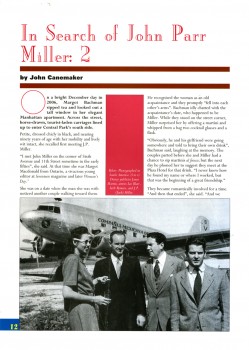 1
1 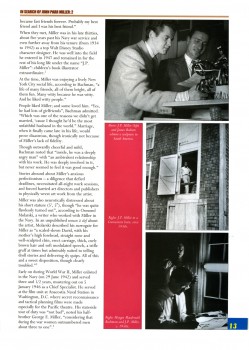 2
2(Click any image to enlarge.)
Articles on Animation &Books &Commentary &Disney &Illustration &John Canemaker &Layout & Design &Story & Storyboards 01 Jul 2013 07:29 am
Alice Boards
John Canemaker‘s book Paper Dreams: The Art & Artists of Disney Storyboards, is a brilliant work. As an example, take a look at this short piece for Alice In Wonderland.
The animated feature went through a long, slow birth.
The first board, for this sequence, was by David Hall and was done in 1939, the late Thirties. Hall was originally a production artist for Cecil B. DeMille at Paramount Pictures; he worked as an illustrator who was called in to make many delicate watercolors. There was one sequence from the Carroll original which was kept for the final film. In it, Alice gets trapped within a house when, having bitten into a cracker, she suddenly starts getting larger and larger until she fills the white rabbit’s home with her head and overgrown body parts. Many a creature try to pull her from the house.
Here are some of the Hall watercolor images:
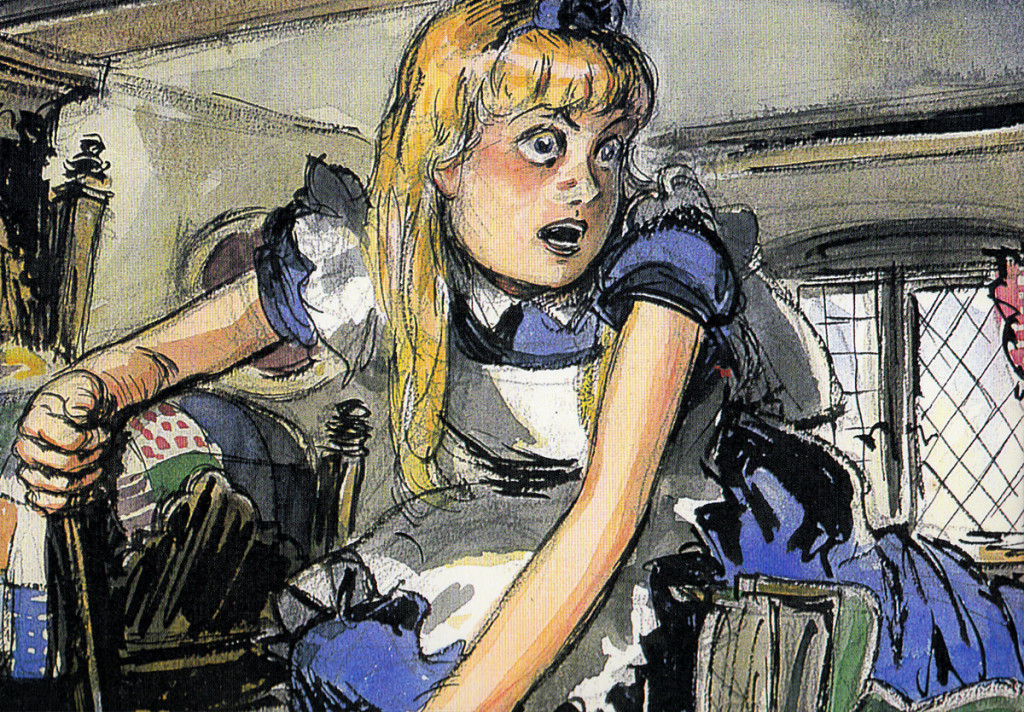 1
1
Following his version, there was an attempt at a script by novelist Aldous Huxley. Done in 1945, this was ultimately abandoned when storyboard continuity artist, Joe RInaldi, came in to make some more cohesive and funny drawings in 1950.
Here’s the full sequence, Rinaldi’s version.
The following is Rinaldi‘s board enlarged for the sake of legibility:
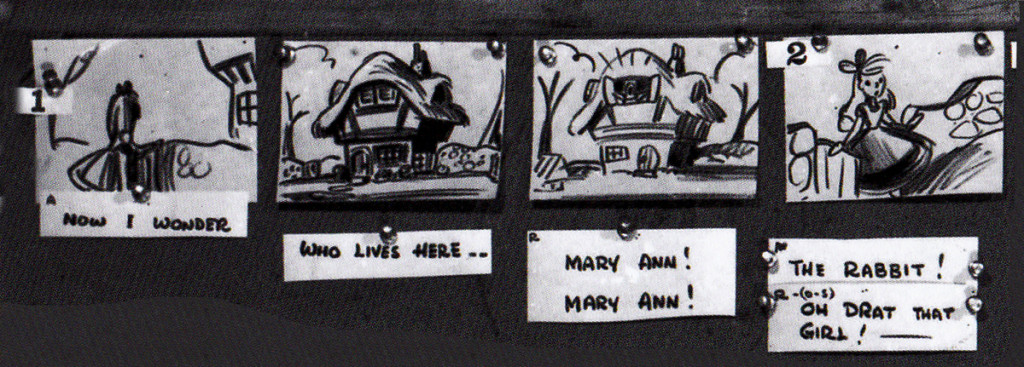 1
1
I have to give John Canemaker many thanks for allowing me to post these images. His book is a treasure. to those who appreciate the storyboard.
